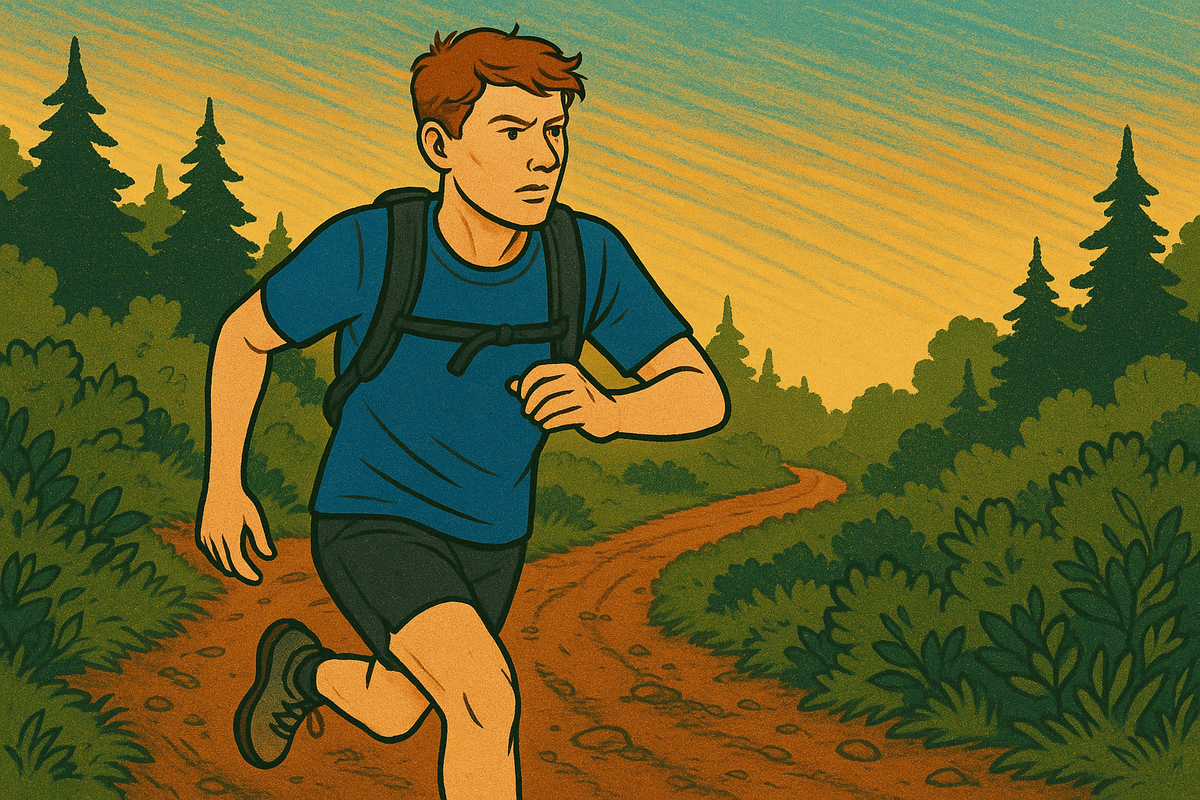
Let’s face it—there’s something magical about ditching the treadmill for a winding dirt path through the woods. The uneven terrain beneath your feet, the fresh air filling your lungs, and not a car horn in earshot. No wonder trail running has exploded in popularity, with approximately 20 million participants worldwide and a 15% rise in the past decade!
But here’s the catch: those beautiful, challenging trails come with their own set of risks. Recent research shows that between 12% and 100% of trail runners experience lower limb injuries at some point. Yikes! That’s quite a range, right? But don’t hang up your trail shoes just yet—understanding these injury patterns is your first step toward prevention.
Where Trail Runners Hurt Most
If your knee has ever complained after a particularly technical trail descent, you’re not alone. According to a comprehensive review of trail running injuries, the knee is ground zero for most problems, followed by the ankle and Achilles tendon.
Think of your body like a suspension bridge—when one part takes too much strain, the whole structure feels it. On uneven trails, your knee acts as the primary shock absorber, especially during those quad-burning downhills. Meanwhile, your ankles are constantly adjusting to rocks and roots, and your Achilles tendon gets extra stress from variable inclines.
Other common trouble spots include:
- Foot/toes (hello, blisters and black toenails!)
- Plantar region (that sensitive sole of your foot)
- Calf muscles
- Hip (especially the iliotibial band, or IT band)
Why Trail Injuries Happen
Unlike road running, where the surface is predictable, trail running throws a constant stream of surprises at your feet. Every root, rock, and sudden decline requires your body to make split-second adjustments. It’s like comparing a structured dance routine to improvised freestyle—both are dancing, but one demands more spontaneous adaptation.
Trail running injuries typically stem from three main categories of risk factors:
Personal factors: Your age, gender, and even racial background can influence injury susceptibility. Sorry, we can’t change these!
Training and racing factors: This includes things like training volume, race experience, surfaces, terrain, footwear choices, and race distance. The good news? These are largely under your control!
Health-related factors: Previous injuries, chronic conditions, sleep quality, and mood all play a role in your injury risk.
Trail-Proof Your Running
Ready for some practical ways to keep enjoying those gorgeous trails without ending up sidelined? Here’s your trail safety toolkit:
Build Trail-Specific Strength
Those gym workouts pay dividends on the trail! Include exercises that improve:
- Balance (try single-leg stands while brushing your teeth)
- Ankle stability (wobble boards are your friend)
- Eccentric quad strength for downhill control (think slow, controlled lunges)
Master the Technical Terrain
- Start with less technical trails and gradually progress to more challenging routes
- Shorten your stride on technical sections (imagine running on eggshells)
- Practice “reading the trail” ahead to spot obstacles early
Gear Up Properly
- Trail running shoes with appropriate traction for your usual terrain
- Consider ankle support if you have a history of sprains
- Remember that high-top shoes aren’t a magical fix—research questions whether they actually prevent ankle injuries!
Listen to Your Body’s Signals
- That niggling Achilles pain? It’s trying to tell you something
- Reduce mileage or take a rest day at the first sign of trouble
- Consider cross-training on recovery days (swimming or cycling maintain fitness while giving running muscles a break)
Adapt Your Training Progressively
- Increase weekly mileage by no more than 10% per week
- Allow extra recovery after technical trail sessions
- Factor in elevation gain as part of your training load (100m of climbing isn’t the same as 100m on flat ground!)
Trail running offers an incredible combination of physical challenge, mental refreshment, and connection with nature. Understanding the common injury patterns doesn’t mean you should fear the trails—it means you can approach them with the respect and preparation they deserve.
So lace up those trail shoes, pack some extra water, and hit the dirt with confidence. Your body (and mind) will thank you for the adventure!
This article is based on research by Xinyan Jiang, József Sárosi, and István Bíró, published in Physical Activity and Health, Volume 8, Number 1, 2024.
Discover More
- Can Creatine Save Your Workout When Cutting Carbs?
- Carnivore Diet for Athletes: Do You Need Carbs After All?
- Mix It Up! How to Combine Cardio and Strength Training for Maximum Results
- Rocking Your Walk: How Unstable Shoes Could Strengthen Your Feet and Improve Your Balance
- Trail Running Safety: Navigate the Path to Injury-Free Adventures
- Tech Your Way to Better Fitness: How Older Adults Are Using Digital Tools to Stay Active
- Rest Periods Matter: Finding Your Sweet Spot for High-Intensity Sprint Training
- Supercharge Your Jump: How Adding Bands to Your Deadlift Can Boost Performance
- Caffeine Before Exercise: Is Your Pre-Workout Cup of Joe Actually Helping You Burn Fat?
- Paws-Itively Perfect Exercise: How Your Dog Can Be Your Best Workout Partner
- The Long and Short of It: How Pole Length Can Boost Your Cross-Country Skiing Performance
- Time-Restricted Eating: Get Leaner Without Losing Your Gains
- Boost Your Strength & Shed Fat: Essential Amino Acids + Resistance Training
- Finding Your Perfect Fit: How Footwear Affects Performance and Injury Risk
- HIIT vs. Moderate Exercise: The Mood Rollercoaster Your Workout Takes You On
- Hydration Hype: Do Specialty Drinks Boost Exercise Performance?
- Move It or Lose It: How Your Daily Movement Patterns Affect Your Lifespan
- Moving Matters: How Small Steps Can Keep You Stronger for Longer
- Say Cheese! How Adding Cheese to Resistance Training Can Improve Your Body and Gut Health
- Take Your Workout to the Great Outdoors: How Nature Boosts Your Exercise Benefits See more
